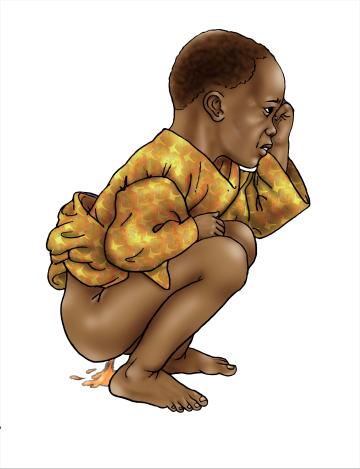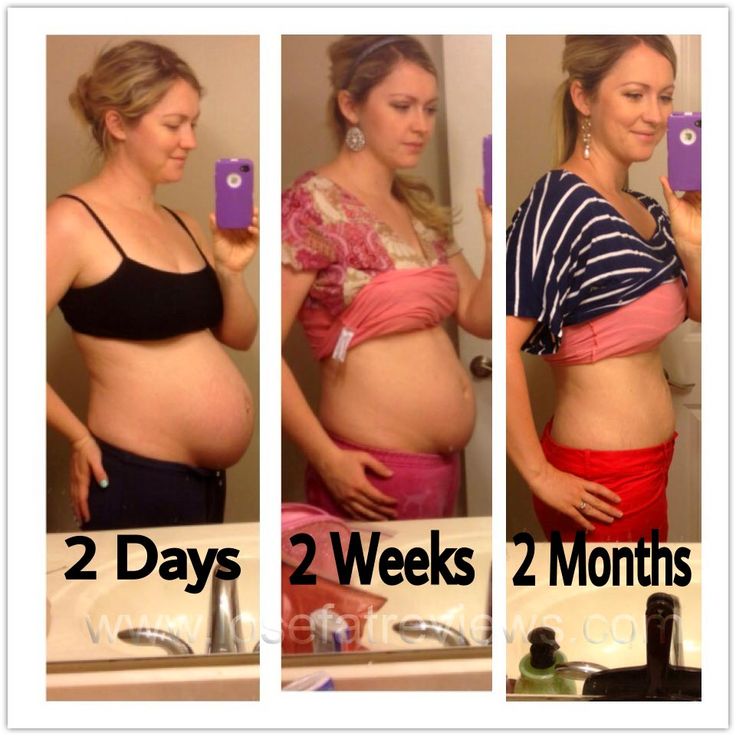How to toilet train your child at night
Potty Training at Night
Potty training your toddler is one of the most important jobs you have as a parent. Figuring out how to make it through the day accident free is a huge milestone for parents. But what happens when your kids go to sleep and have to make it through the night without wetting the bed? These useful tips will help you transition to potty training at night, while promoting restorative sleep for parents and children alike.
Potty Training at Night
Believe it or not, being potty trained at night can come months (or even years!) after your child is keeping their underwear dry all day long. In fact, some pediatricians recommend waiting until your child is five years old before starting to wear underwear to bed.
1. Are they ready?
Potty training during the day and potty training at night are two completely different ballgames. Just because your sweet toddler is a pro at using the potty all day long does not mean she is ready to make it through the night accident-free.
A good indicator that they are ready to take the leap is if they are already waking up dry in the morning (and keep it up for several weeks.) You can use this development as the go-ahead for facilitating nighttime potty training.
2. Establish a Routine.
A nighttime potty training routine is simple. Make sure your child goes to the bathroom right before hopping into bed at night. Make sure they try, even if they say they don’t have to go.
Be sure to let your child know that they need to listen to their bodies even when they’re sleeping. And if they have to go potty, they need to get out of bed and walk to the bathroom.
Install nightlights in the hallway and in the nearest bathroom, and let them practice getting out of bed to go potty. You might even purchase a special nighttime flashlight that they can use to light their way.
4. Should you wake them up?
Some parents approach nighttime potty training by setting alarms and waking kids up at the same time each night to train their bodies to wake up and use the potty.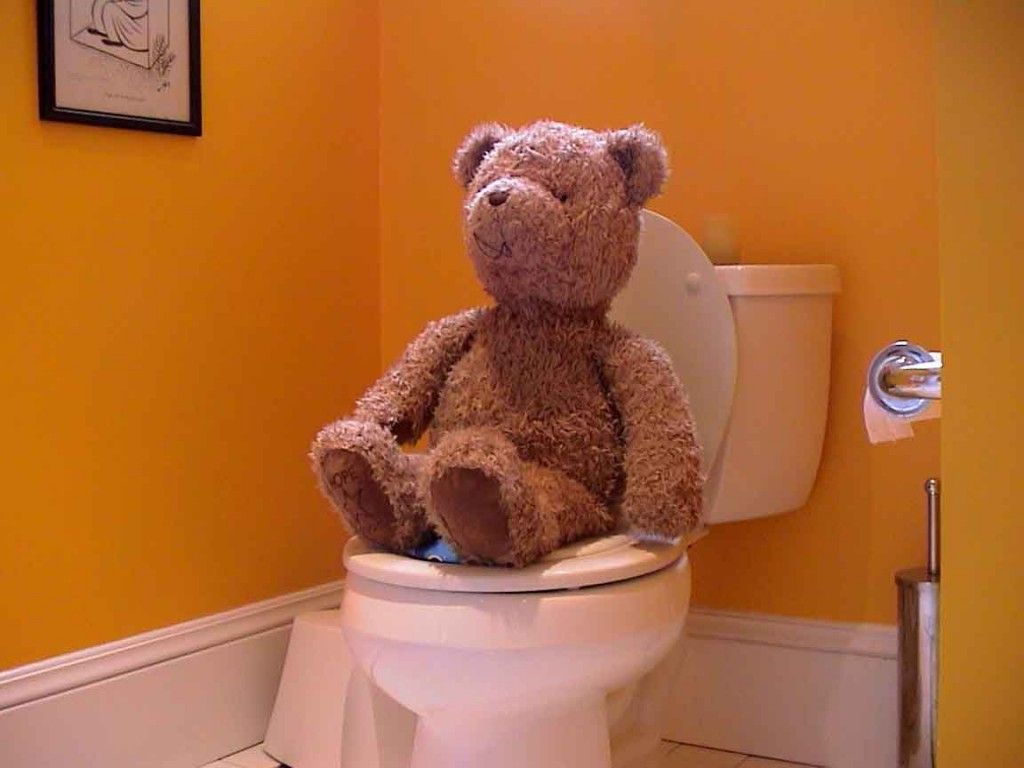 Some parents wake their child up just before they head to bed themselves. And some parents never wake their kids up at all.
Some parents wake their child up just before they head to bed themselves. And some parents never wake their kids up at all.
If you really feel like your child is ready to stay dry all night long, see what happens the first few nights. If there are frequent accidents, you can either start waking them up throughout the night to use the potty – or just wait to tackle nighttime potty training until they’re really ready.
5. Should you stop liquids at night?
Some parents swear by cutting off all liquids after dinner, barely allowing their child a sip of water with their bedtime snack. Other parents send their kids to bed with water bottles. Which solution will have your child staying dry all night long?
According to WebMD, there’s no need to restrict water and other fluids excessively, but tapering your child’s consumption of fluids during and after dinner might be worth trying if bedwetting is an issue.
Just keep in mind that wetting the bed is not caused by your child having a full bladder at night.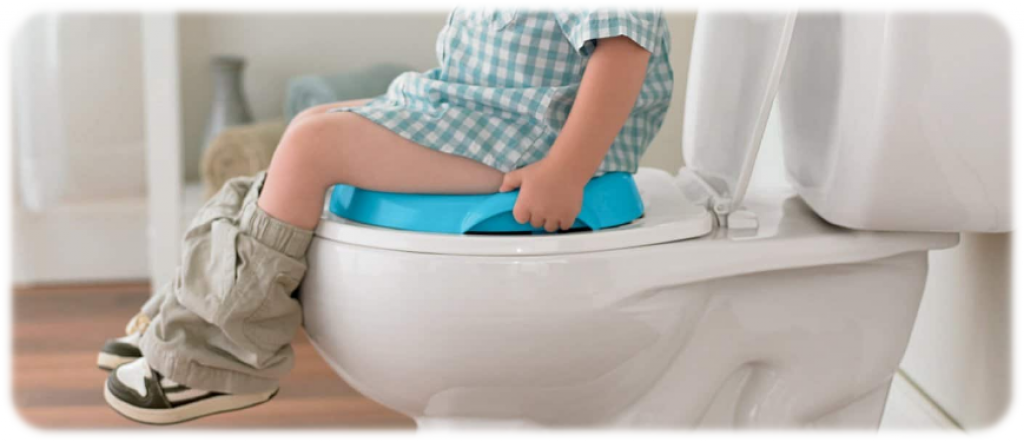 It’s caused by your child not waking up to use the potty.
It’s caused by your child not waking up to use the potty.
6. Bedwetting Hack
No one wants to spend time, in the middle of the night, putting clean sheets on a bed when you could be sleeping! When you’re first starting out with potty training at night, do yourself a favor and invest in one (or two) plastic sheets. HINT: A plastic tablecloth will work too.
One plastic sheet goes on top of the mattress, followed by a set of sheets (fitted and flat.) THEN, put on another plastic sheet, followed by a set of sheets.
If your child has a middle-of-the-night accident, all you need to do is strip off the top layer of sheets and plastic sheet, and you have a fresh set all ready to go. (Which means you are both back in your beds and on your way to dreamland even faster.)
7. Set your expectations.
It can be defeating to face a freshly peed set of sheets each morning and a child who has no recollection of what happened.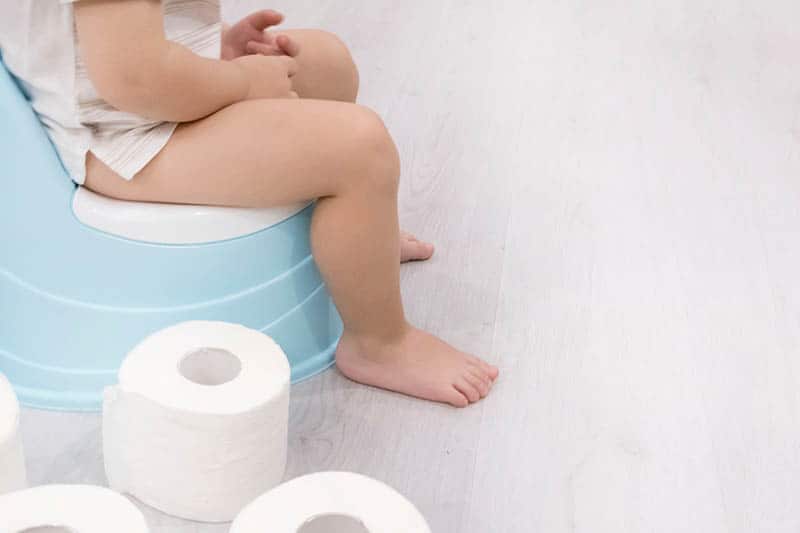 Spare your potty-trainer the resentment and disappointment, and remember that this is not forever. YOU no longer pee the bed, and they won’t be peeing it forever either. Your patience and grace are crucial for this nighttime transition because you do not want to send your child to bed with the fear of doing something wrong. Or worse, disappointing you.
Spare your potty-trainer the resentment and disappointment, and remember that this is not forever. YOU no longer pee the bed, and they won’t be peeing it forever either. Your patience and grace are crucial for this nighttime transition because you do not want to send your child to bed with the fear of doing something wrong. Or worse, disappointing you.
This is also the time to really decide if your child is ready for potty training at night. Did you start nighttime potty training because your child is begging to ditch the diaper at night? Is it because YOU feel like they should be wearing underwear? Is it because they’re heading off to college next week and it’s time?
Those can all be good reasons, but be sure to go back and read #1 to make sure your child is really ready before everyone is stressed out and exhausted.
Additionally, don’t hesitate to reach out to your pediatrician if bedwetting becomes an ongoing issue.
Potty Training Doesn’t Have to Stink!
If you’re potty training your child, Kandoo is here to help.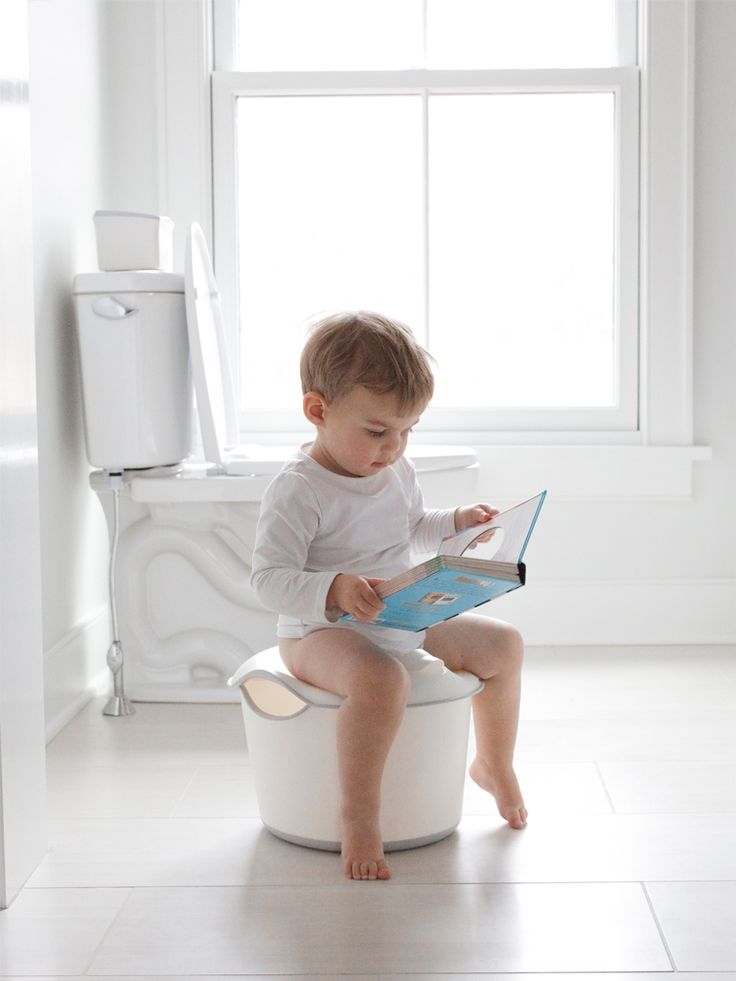 Follow the three steps below to receive all of the potty training support we have to offer.
Follow the three steps below to receive all of the potty training support we have to offer.
1. Get Potty Training Resources
Visit Kandookids.com/PottyTraining for hacks and support on your potty training journey. From the very basics to how to handle potty training regressions, poop problems and wiping, we’ve got answers to your questions.
2. Sign up for our Potty Training Program
Need a little more help and support? Sign up for our FREE potty program. It’s full of step-by-step advice to walk you through the entire potty training process – from the first time you introduce the potty to how to throw a potty training party to celebrate your success at the end.
Sign up, and you’ll receive the most effective hacks on potty training including a step-by-step plan of action on when to start, supplies to buy, how to keep it silly, how to handle set backs and more! Click here to join now.
3. Stock up on Supplies – like Kandoo Flushable Wipes
Kandoo Flushable Cleansing Wipes clean up to 30% better than toilet paper. The wipes pop up with the push of a button, making them perfect for little hands. Added bonus? No more using too much (or too little) toilet paper.
The wipes pop up with the push of a button, making them perfect for little hands. Added bonus? No more using too much (or too little) toilet paper.
Help your little one get a clean wipe every time with the Kandoo Potty Time Pack. From Kandoo Flushable Wipes to Kandoo BRIGHTFOAM® Hand soap – and even a potty training superhero cape – the Potty Time Pack has everything you need for potty training success.
If your child likes to be independent, the Kandoo Potty Time Pack can help. Click here to purchase it now with free shipping!
Pin It!
Tips to Help You Nighttime Potty Train Your Kids
Parenting
written by GABRIELA GARCIA
Source: @briahammelinteriors
When it came time to potty train my children, I was very nervous. I kept putting the process off because I was afraid of how time-consuming it would be and of the imminent accidents that would occur.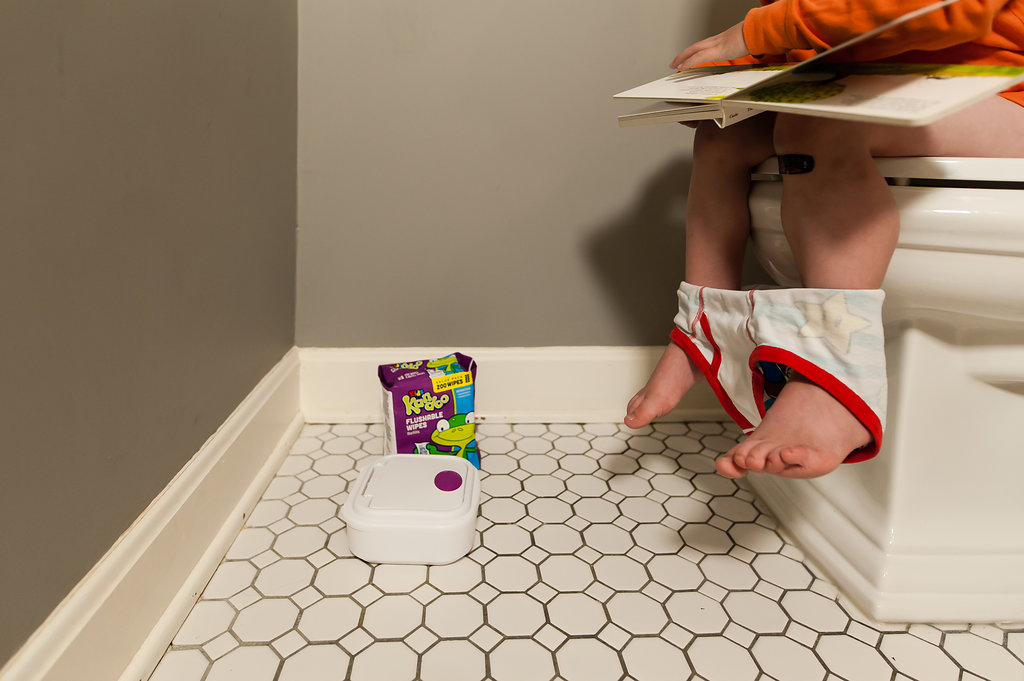 When the time finally came, I blocked off a four day weekend to focus solely on potty training—no traveling, no events, no errands–just me, the kids, and the potty. I was prepared for weeks of cleaning up pee from the floor and a mounting frustration on my part.
When the time finally came, I blocked off a four day weekend to focus solely on potty training—no traveling, no events, no errands–just me, the kids, and the potty. I was prepared for weeks of cleaning up pee from the floor and a mounting frustration on my part.
To my surprise, the potty training went better than expected. There were a few accidents, yes, but my well-planned positivity and patience—along with my kid’s enthusiasm—was the key to their success.
Potty training during the day was a success, but what about overnight potty training? How do you potty train children who are, you know, not awake?
What I’ve learned is that you can’t really train your kids not to potty during the night and that you have to wait for them to be developmentally ready. After all, it’s their unconscious brain that needs to inhibit bladder release—which is no small feat.
Some moms suggested that I awaken my kids at night to allow them a “midnight pee.” I quickly decided against this advice because 1) I don’t want to wake up midnight, and 2) once my kids are awake, they are awake, and it would take them forever to get back to bed.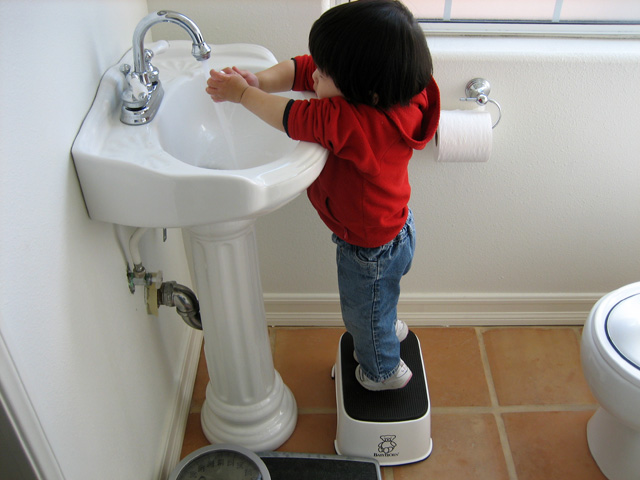
Now that my children sleep through the night successfully without wetting the bed, I’ve rounded up six things that have helped us through the process. It took significantly longer than potty training during the day (like close to a year), but we’ve come out the other end dry and happy.
1. Consistent daytime potty breaks
Setting up good habits for daytime potty breaks greatly helps during the nighttime hours. My kids are notorious for waiting until the last minute to go potty, so I’ve been adamant about asking them every so often if they need to use the potty. This is especially important when they’re playing as they will often ignore their bodies’ cues and would rather continue to play than to take a break and go potty.
We still have accidents every now and then, but for the most part, they know how to listen to their bodies and go potty right away instead of waiting. The better they are at understand this, the better they will do at going potty during the night.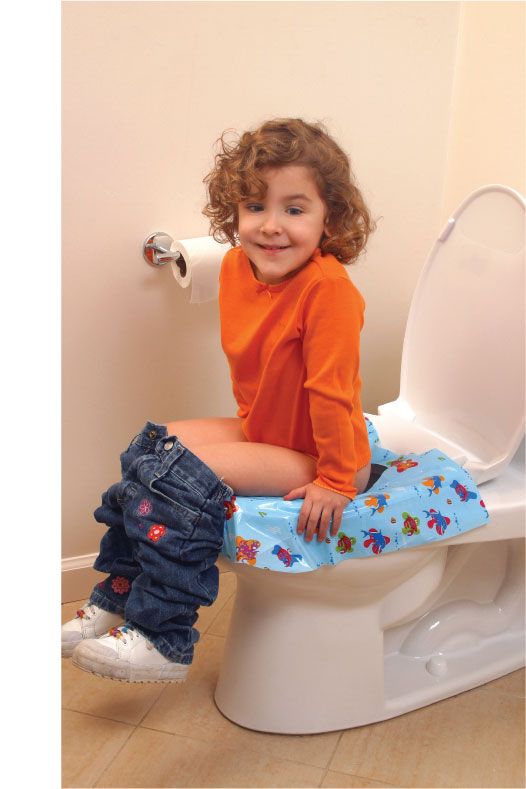
Source: @summerinfant
2. Use Pull-Ups
Both of my kids relied on Pull-Ups for a while until they were ready to sleep in regular underwear. Even though they would wear Pull-Ups, I encouraged them to use the potty before bed and still use the potty when they felt like they needed to, not just pee in their Pull-Ups because it’s there.
I created a reward chart, and every morning that they would wake up with dry Pull-Ups, they would get a sticker. After two weeks of waking up dry, they got a small toy of their choice, and we were able to transition to underwear soon after.
3. Limit liquids
Between dinner and bedtime, I limit the amount of water my kids will drink. If they do ask for water, I give them the smallest cup we have in our cupboard. I try to discourage them from drinking any water an hour before bed, but this is tough during the summer months when it is still hot outside. I just try to make sure that they are well hydrated throughout the day so that they aren’t so thirsty later that night.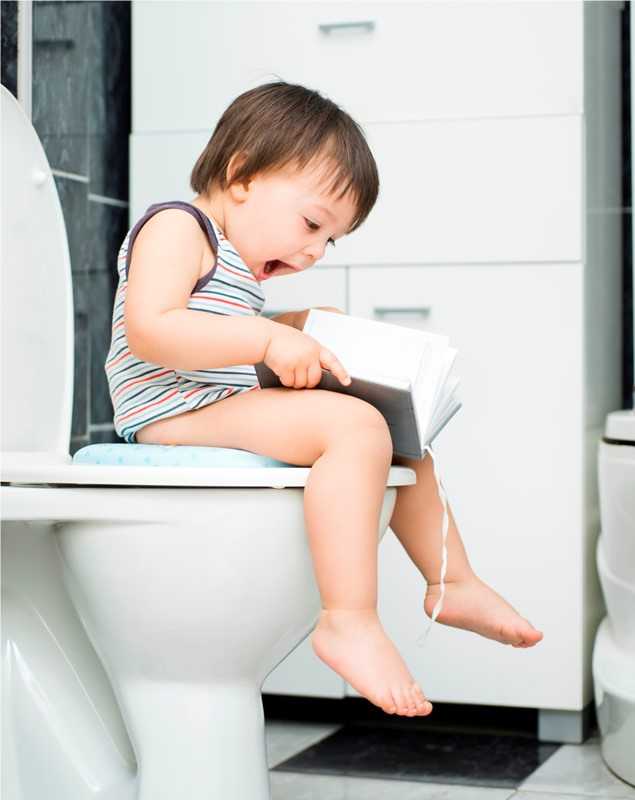
4. Potty before bed
Our bedtime routine always includes going potty before we settle down for a book. After books are read and cuddles have been given, I will ask them one more time if they need to go potty.
There have been a few nights (like nights when we’ve stayed up way too late due to holidays or special events) when bedtime was rushed and I forgot to remind them to go potty before bed. Of course, these are the nights when accidents happen.
Source: Shutterstock
5. Follow your child’s cues
My daughter was ready to sleep without her Pull-Ups way before my son was. She even asked to not use them anymore. My son expressed concern and was nervous to stop using them, so I didn’t push it on him. I waited until he became more confident and was eager to try sleeping without them. When he was finally ready, he successfully started waking up dry.
6. Prepare for accidents
Accidents will happen, and you need to be patient when they occur.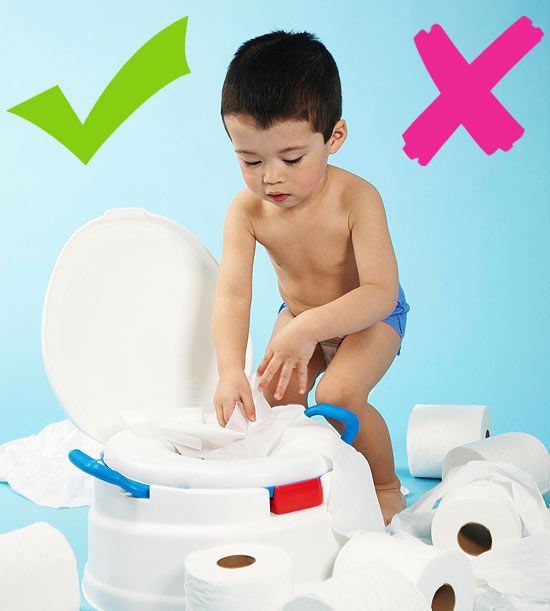 The first few nights of sleeping without Pull-ups, I had my kids sleep on an air mattress with the rubber side up. If they had an accident, it was easy to wipe off.
The first few nights of sleeping without Pull-ups, I had my kids sleep on an air mattress with the rubber side up. If they had an accident, it was easy to wipe off.
As we transitioned back into the bed, I placed water-resistant pads under their sheets and just made sure to have fresh sheets always ready to switch out. I’m not going to lie, there were a few weeks where it felt like all I was doing was cleaning soiled sheets, but it quickly passed, and we’ve been accident-free for a while.
- Tweet
- Pin
02.02.2021
15420
7,0003
Calm Sleep Conditions
1.5–3 years3-7
Anna Rostova
Anna Rostova
Top sleep consultant, breastfeeding consultant
Mom of a son
The issue of avoiding a diaper and potty training a child sooner or later confronts parents.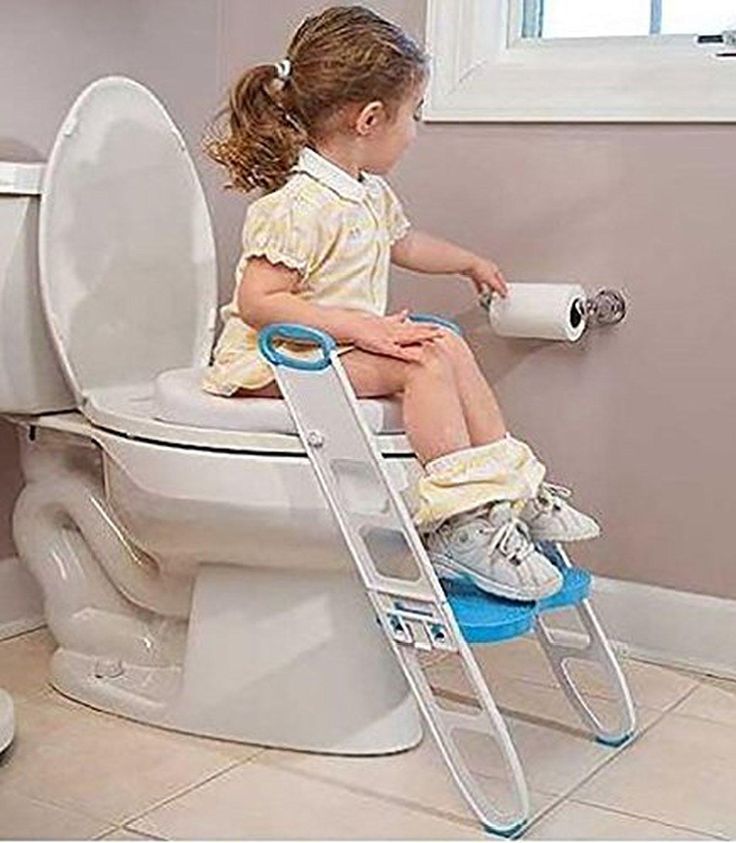 Most often, moms and dads are interested in at what age you can potty train, until what age it is considered normal for a baby to walk in diapers, how to understand that a child is ready to give up diapers and, of course, how exactly to teach a baby to go to the potty. You will find answers to these and other questions in this article.
Most often, moms and dads are interested in at what age you can potty train, until what age it is considered normal for a baby to walk in diapers, how to understand that a child is ready to give up diapers and, of course, how exactly to teach a baby to go to the potty. You will find answers to these and other questions in this article.
Child crisis calendar
At what age do potty training begin?
When deciding to wean a baby from a diaper, it is important to focus not on the stories of other families, but on the psychophysical readiness of your child.
At the age of one year, urination and defecation proceed without the participation of the cerebral cortex, so early potty training is ineffective. Pediatricians believe that potty training before 18 months is not worth it, although acquaintance with the potty can begin at the age of 8-10 months, when the baby can already sit confidently.
Pediatrician E. O. Komarovsky: "Sustained control of urination and defecation is possible not earlier than at 22–30 months."
O. Komarovsky: "Sustained control of urination and defecation is possible not earlier than at 22–30 months."
His position is supported by colleagues from the Scientific Center for Children’s Health of the Russian Academy of Medical Sciences [1]: “The methods of “early potty training” practiced until recently (during the first year of life) are now recognized as outdated and non-physiological, because they do not take into account the degree of muscle maturity and the nervous system of the child (in particular, the innervation of the bladder and intestines). As a result, learning becomes a long and unproductive process.” 1
Thus, early potty training (disembarkation) has a reflex, rather than conscious character on the part of the child, leads exclusively to the development of a conditioned reflex and cannot teach the child to control the excretory system.
The American Academy of Pediatrics advocates that “the second half of the 2nd year of life (18 to 24 months) should be an adequate age target for meaningful hygiene education.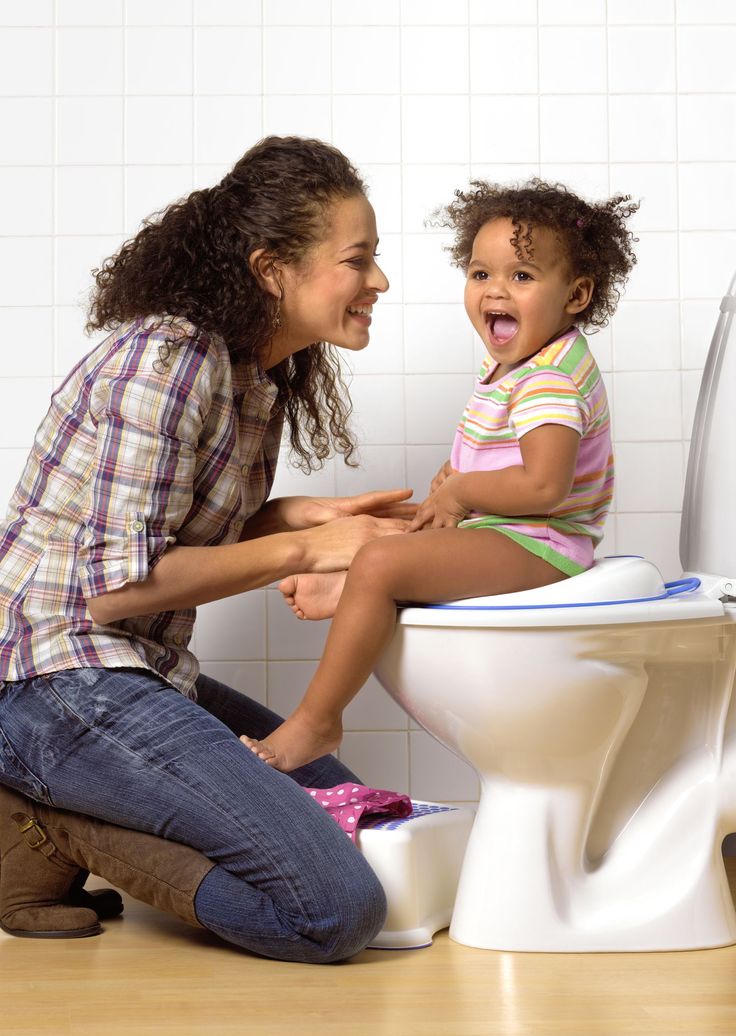 ”
”
Is it time to wean your baby off diapers? Check list.
Check criteria for readiness for diaper weaning and potty training:
- Child age 1.5–3 years
- Diaper stays dry for several hours
- Child has a fairly predictable bowel movement and urination pattern (e.g. after sleep) )
- Understands the words “pee”, “poop”, “potty”
- Can remove panties by himself
- Feels uncomfortable in wet underwear and shows dissatisfaction
- Protests against putting on a diaper or takes it off
- Wakes up with a dry or slightly damp diaper
- Can walk and sit on the potty independently
- Demonstrates interest in imitating the actions of adults If there are 6 or more positive answers, this indicates the readiness of the baby and the opportunity for parents to start weaning from the diaper.
How to wean a baby off a diaper: how does the bladder work?
Have you tried to put your baby out from the first months of life, but this did not bring the desired results, the child continues to urinate at night? Why? To answer this question, it is important to understand how the bladder works and how it relates to brain maturation.

Urination can be carried out in two ways: arbitrary, i.e. according to our will, and involuntary, i.e. reflexively. In children, this process is a reflex. Voluntary urination is provided by a complex regulatory system that involves sex hormones, the spinal cord, subcortical and cortical centers, as well as a system of biologically active substances. A complex system of abdominal and perineal muscles is also involved.
When the bladder is full, a signal is sent to the brain. It is transmitted to the spinal center for the regulation of urination, which is located at the level of the lumbosacral spinal cord and leads to a contraction of the detrusor (muscular membrane, the contraction of which is responsible for the expulsion of urine from the bladder) and contraction of the sphincter.
There are three levels of urination regulation:
- The lower level is synchronization of sphincter relaxation and detrusor contraction.
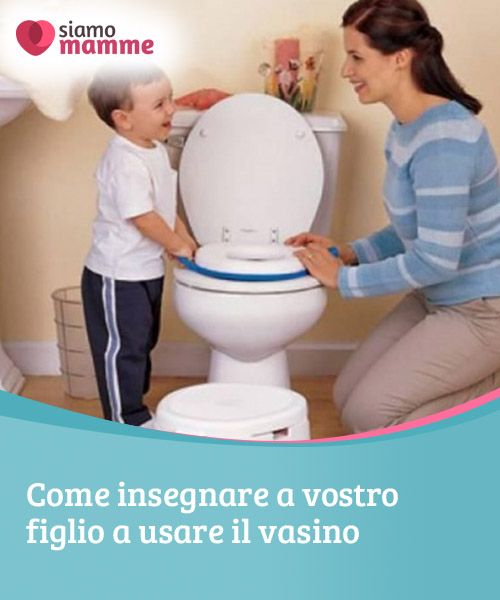
- Medium - regulation of the spinal center, which is aimed at the retention and expulsion of urine.
- The highest level is regulation, which is provided by cortical and subcortical structures (centers located in the medulla oblongata, hypothalamus, frontal and parietal lobes) of the brain.
Urination of a newborn occurs due to the emerging reflex, which closes at the level of the spinal cord. In other words, there is no control over the higher centers at an early age, which means that the baby cannot control the process of urination before control over the higher centers of the nervous system is formed.
The child experiences 4 stages of formation of the bladder control function as they grow up:
Most children develop complete control over the excretory system by the age of 4–5 years. The age limits of control over the excretory system at night are wider - 3–7 years [2].
How to wean a baby from sleeping in a diaper?
Weaning your baby from diapers is easier if there is a clear sleep and nutrition regime, because.
 going to the toilet is usually tied to these events: it is important to plant the baby immediately after sleeping, eating or walking. With older children, you can talk about the fact that he has already grown up and it's time to go to the potty.
going to the toilet is usually tied to these events: it is important to plant the baby immediately after sleeping, eating or walking. With older children, you can talk about the fact that he has already grown up and it's time to go to the potty. Methods for discarding diapers:
- Stock up on dry tights, panties, pajamas, diapers, because this method is “wet pants”. Have your child sit on the potty regularly. If a misfire occurs, do not remove wet underwear immediately, take a short pause so that the baby feels discomfort. Be sure to have clothes, with a running naked child, this method is unlikely to work.
- Everyone is growing, and so am I! The method requires preparation: a few months before the start of weaning, take your child's favorite toy and put a diaper on it. The baby will see that his pet is also wearing a diaper. When the baby is ready, explain that the toy and baby have become adults and no longer need a diaper. You can use another potty to put your favorite toy on it - now they go to the toilet together like adults!
Weaning your baby to sleep in diapers: things to remember
- Formation of control over daytime and nighttime urination can occur at different ages, do not worry if the baby is already dry during the day and wakes up still with a wet diaper.
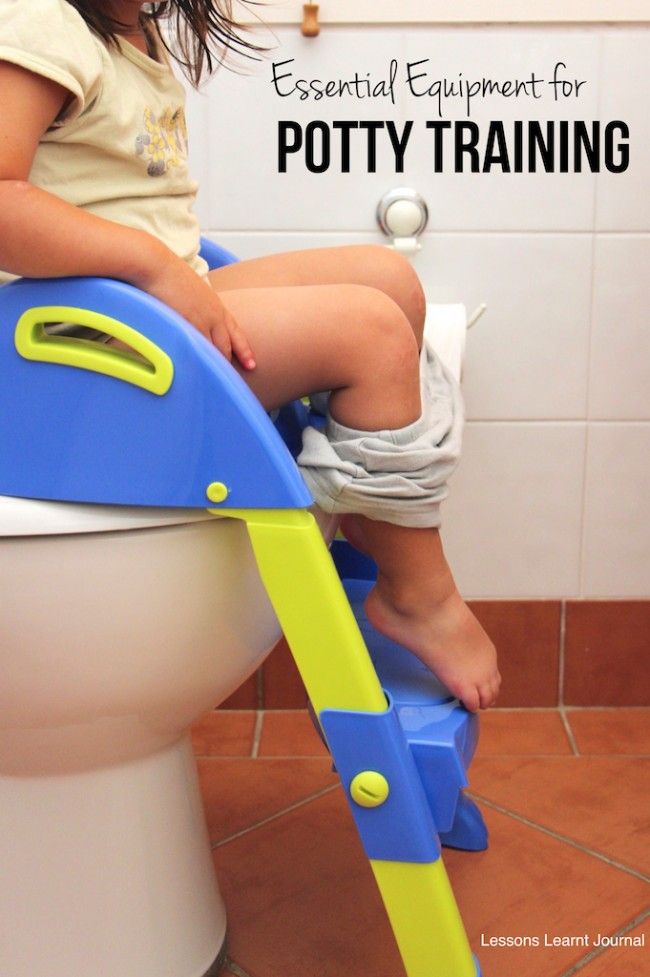 Daytime control usually occurs earlier than night control, with a difference of several weeks to several months.
Daytime control usually occurs earlier than night control, with a difference of several weeks to several months. - Babies usually start to control their bowel movements faster, so it's best to start using the potty when they have a bowel movement.
- It is believed that girls begin to stay dry a little earlier, already by 2.5–3.5 years, and boys by 3.5–5.
How to teach a child to sleep without diapers: helpers for parents
Modern parents have helpers in weaning their baby from diapers: mattress pads, reusable absorbent diapers and waterproof panties.
Waterproof mattress covers
They come in different sizes and shapes, even for round and oval mattresses. They are usually sewn from cotton or microfiber with a membrane that makes the mattress pad waterproof. They are fastened with four elastic bands at the corners or with a solid elastic band sewn into the sides of the mattress pad. A mattress topper with a solid elastic band that covers the entire surface of the bed mattress and sides is best kept.
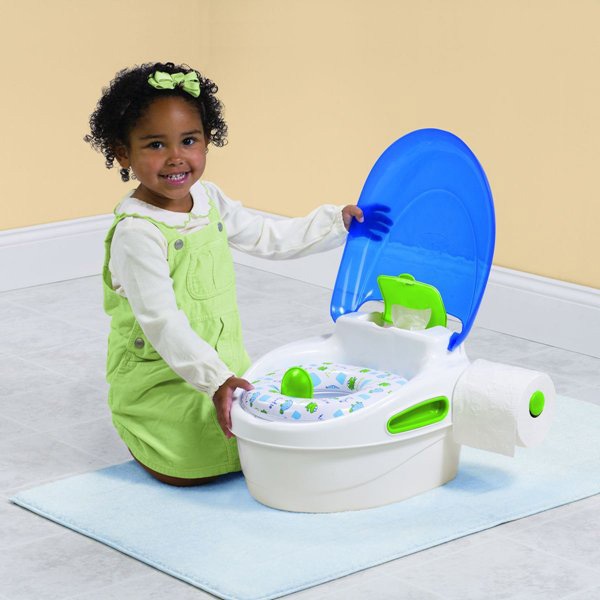
What to look for when choosing a mattress pad:
- It must fit the bed mattress.
- The fabric of the mattress pad must not rustle or be slippery. The rustling can interfere with the baby's sleep. And the sheet, if it is not on an elastic band, will ride on the slippery fabric of the mattress pad and crumple.
- The fabric must be breathable.
Reusable pads
Another sleep aid without diapers. They do not need to be covered with an extra sheet on top. The diaper absorbs moisture and stays dry. After getting wet, it is enough to wash it - and you can use it again.
This diaper consists of absorbent layers. There are double-sided waterproof diapers - if it gets a little wet, you can turn it over and use it again.
Waterproof panties
Waterproof panties can be a handy assistant in weaning from diapers. They are intended for children from 1 to 3-4 years old who are learning to use the potty or have already learned, but sometimes there are “misfires”.
 The size can be adjusted in width and height. Panties are reusable and can be washed.
The size can be adjusted in width and height. Panties are reusable and can be washed. Outer layer made of waterproof breathable fabric. There are models with a removable liner for quick drying. You can wash it and adjust its size with the help of special cuffs.
Enuresis: should I be concerned?
ICCS criteria
Modern, practical recommendations [3] are offered by the International Children's Continence Society (ICCS). They were revised and supplemented in 2012.
Enuresis - intermittent non-permanent incontinence during sleep in children over 5 years of age.
Primary - there was no dry period from birth or it lasted less than 6 months. Secondary - had a dry period of at least 6 months. Monosymptomatic and non-monosymptomatic. The presence of lower urinary tract symptoms influences the choice of treatment.Children who wet their bed during sleep and do not have daytime symptoms of bladder dysfunction are diagnosed as monosymptomatic enuresis.
 They urinate at night, but the bladder functions are completely normal (i.e. the child goes to the toilet 5-7 times a day, does not delay the moment of urination by resorting to urinary retention maneuvers, there are no symptoms of urge urination, can empty the bladder without problems). In such cases, treatment may focus on episodes of urinary incontinence during sleep without any prior procedures.
They urinate at night, but the bladder functions are completely normal (i.e. the child goes to the toilet 5-7 times a day, does not delay the moment of urination by resorting to urinary retention maneuvers, there are no symptoms of urge urination, can empty the bladder without problems). In such cases, treatment may focus on episodes of urinary incontinence during sleep without any prior procedures. Children who have lower urinary tract symptoms and who may also have gastrointestinal symptoms such as constipation or fecal incontinence have nonmonosymptomatic enuresis. In this case, daytime symptoms must be managed before treating bedwetting. Enuresis is no longer just a functional disorder, a more thorough examination and identification of possible causes (hydronephrosis, megaureter and other malformations of the urinary system, diabetes, overactive bladder) are needed.
PEDIATOR'S COMMENT
Natalia Trofimova
Senior Sleep Consultant, Pediatrician
Peeing at night is normal until around age 5, children mature at different rates.
After all, they also begin to talk and walk not at a strictly defined age. And this function is even more complex and largely determined genetically.
Urine is produced continuously. Even if you don’t drink anything, the kidneys work, filter and purify the blood from metabolic products. We drink less - less urine and it is more concentrated.
The frequency and volume of urination depend on the amount of fluid drunk per day and on age, but during the period when enuresis is diagnosed, it is 5-7 times a day.
The main mechanisms responsible for the onset of enuresis are:
- polyuria (increased amount of urine) associated with circadian fluctuations (not deficiency) of antidiuretic hormone;
- problems with awakening: only 9% of children with enuresis were woken up by a sound louder than 120 dB, this is significantly less than in the control group;
- insufficient suppression of the micturition center in the brainstem, when the center is not able to effectively suppress the emptying of the bladder during sleep.
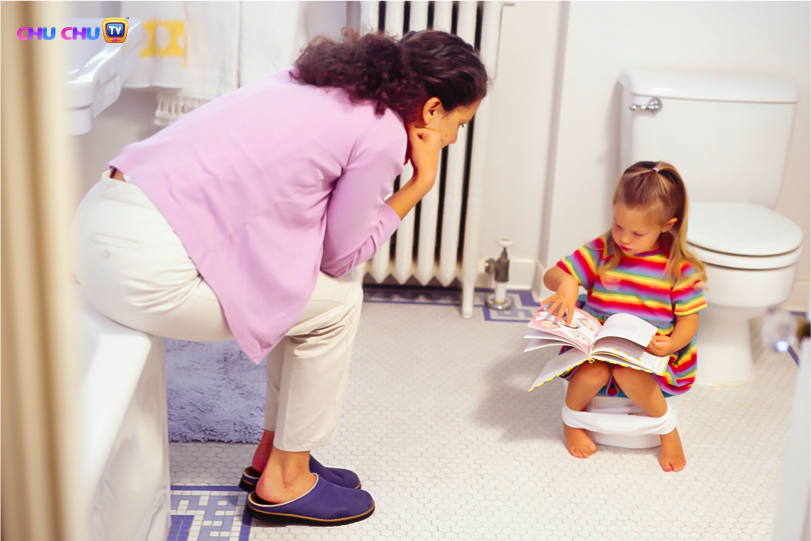
In about 70% of cases of monosymptomatic primary enuresis, there is a genetic predisposition, that is, one or both of the child's parents suffered from this disease. This is mainly a functional disorder, a feature of the maturation of the nervous system and the mechanisms of regulation of urination. As a rule, by the age of 15 it passes without treatment. A very small percentage of childhood enuresis passes into adulthood, and they are rather underexamined secondary.
Treatments other than overnight fluid restriction:
- Cognitive Behavioral Therapy: More commonly used for daytime incontinence, but elements of motivational techniques apply to bedwetting.
- Special devices - urinary alarms. They train the reflex awakening when the bladder is full. Treatment is carried out for a minimum of 16 weeks.
- Antidiuretic hormone preparations (tablets, nasal spray): they are taken at bedtime, are very effective, but relapse occurs when stopped.
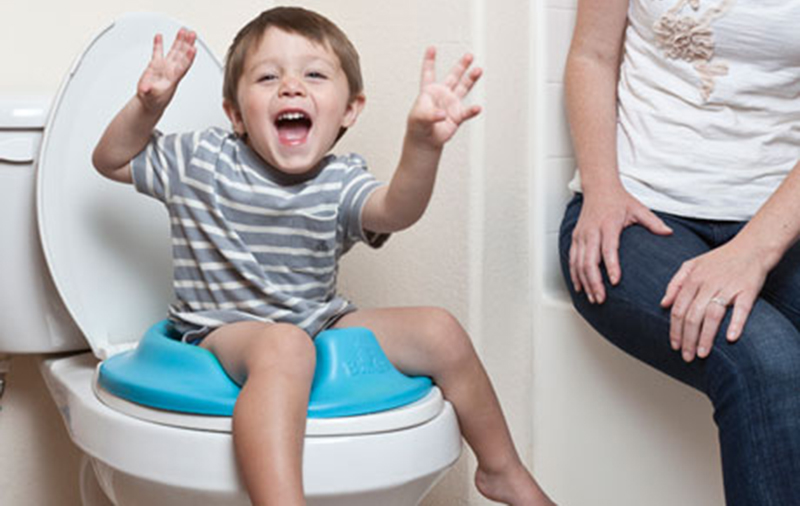 To maintain the effect, they are used in combination with others. These drugs help children and adolescents to socialize, to avoid an inferiority complex in the case of collective trips, overnight stays with friends, in children's camps.
To maintain the effect, they are used in combination with others. These drugs help children and adolescents to socialize, to avoid an inferiority complex in the case of collective trips, overnight stays with friends, in children's camps.
Tips for parents
- Don't compare your baby with others - every child is individual and develops according to his own scenario. What is good for other children may not be good for yours. Orientation to the opinions of others can lead to a lot of tension around an unimportant issue.
- A systematic approach is important in potty training a baby: getting to know the potty, including it as an element of the ritual before going to bed, daily exercises.
- Integrate potty planting into your daily routine. Most often, children want to pee after eating, walking and sleeping. Offer to go to the toilet during these periods, without waiting for the baby to ask himself.
- Limit fluid intake before bed. It is advisable not to give the baby water 1-2 hours before bedtime.
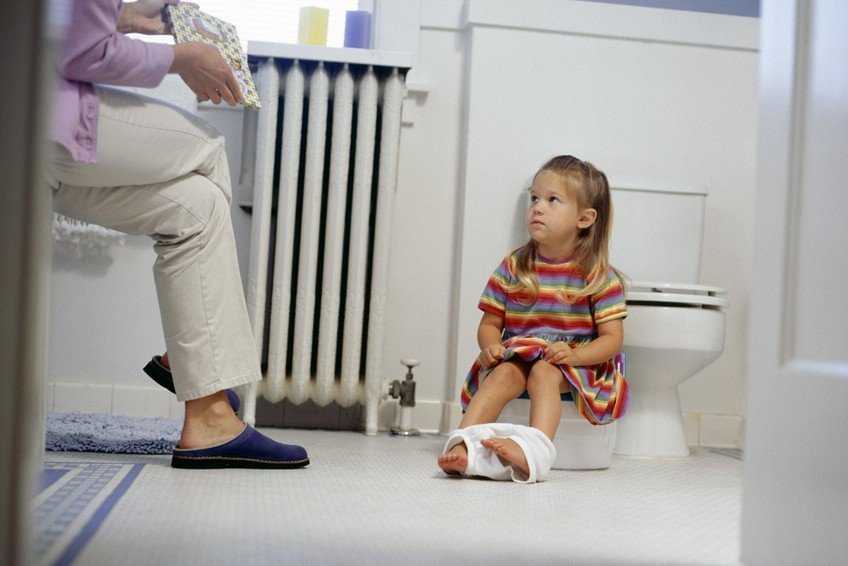 The main part of the daily volume of liquid should be drunk in the first half of the day. Exclude drinks with a diuretic effect: dried fruit compote, grape and apple juice, rosehip broth, cranberry or lingonberry juice.
The main part of the daily volume of liquid should be drunk in the first half of the day. Exclude drinks with a diuretic effect: dried fruit compote, grape and apple juice, rosehip broth, cranberry or lingonberry juice. - Weaning from diapers while walking is best done in the warm season.
"Bad advice" for parents
- Start training as early as possible: the sooner you start planting and refusing a diaper, the faster you will overtake the neighbor's baby - you will have something to tell other mothers about.
- Wake your child up at night to pee, even if he is fast asleep, because sleep disturbance is nothing compared to the importance of "peeing on the potty".
- Scold your baby for wet pants or bed: let him understand from early childhood that he must control himself.
- Put your child on the potty, even if he refuses, resists and cries, because the end justifies the means.
Potty training: a child-centered approach
A child-centered approach, or in other words, a physiological method, is based on the readiness of the child to master the potty:
- Physiological maturity - strengthening the muscles of the sphincters of the bladder and intestines, the necessary development of the nervous system.
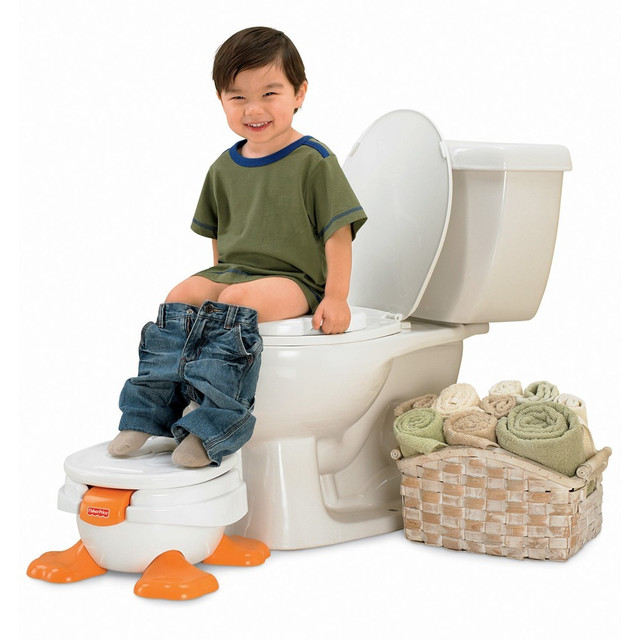
- Psychological readiness.
- Emotional readiness (understanding and willingness to follow instructions).
Advantages of the method:
- takes into account the maturity of the nervous system, this reduces the stress around mastering the toilet;
- is based on the developmental level of the baby, allows moms and dads to better understand their child;
- helps the child learn the conscious use of the potty, and not just develop a conditioned reflex.
The method is based on the gradual development of potty skills and consists of 5 steps:
Step 1. Realistic expectations and preparation of parents , age range for potty training; about what is the norm, and when to sound the alarm.
Step 2. Baby's signs of readiness to learn
When the baby shows at least 6 signs of readiness at about 18 months of age (see the checklist), mom and dad can begin to teach the child toilet skills.
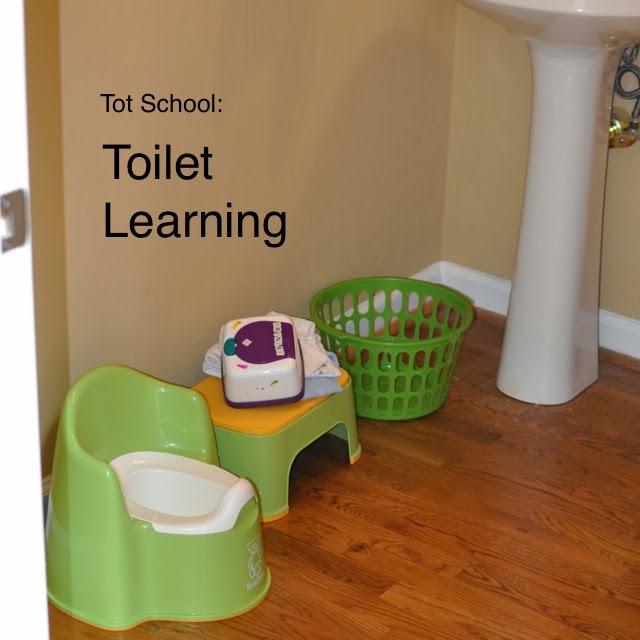
Step 3. Hello pot! It's me!"
Introduce the child to the potty: tell about the purpose of the potty, what to do with it. It is important that the acquaintance takes place in a positive environment, you can use toys and books.
Step 4. Forming associations
Put your child on the potty for a short time every day. This can be done with clothes/diapers on at first, then let the baby sit after removing the dirty diaper, or put the used diaper in the potty.
Step 5: Consolidate knowledge
When you see that the child is comfortable sitting on the potty, offer him a potty as soon as the baby shows signs of the need to pee or poop. At first, he needs to be accompanied, but as he grows older, he will begin to ask for a potty on his own.
Things to remember:
- Praise is a powerful tool for success. For older children, you can arrange a roll of honor: for each successful trip to the potty, hand over a star and solemnly place it on the wall.
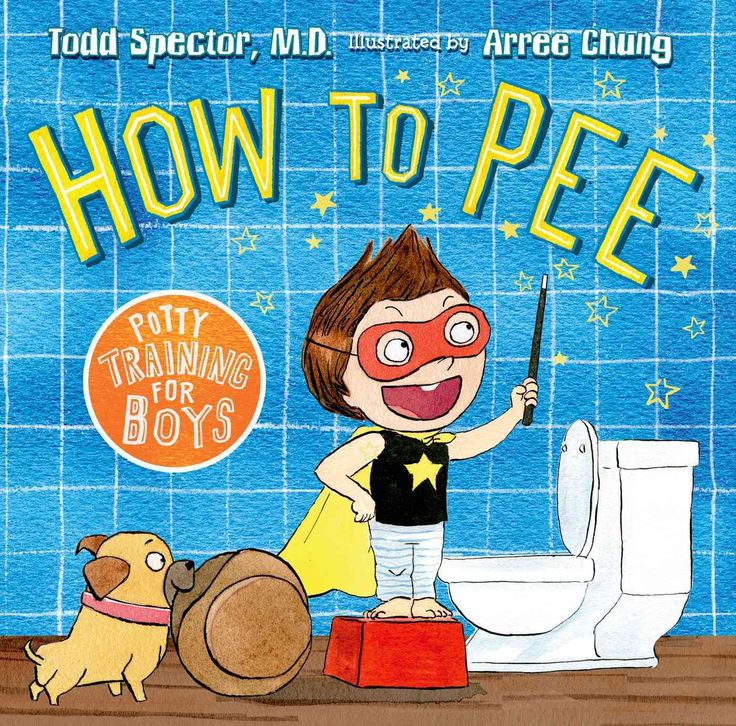
- Misses are inevitable! Potty training is the same skill as learning to walk or speak. Every day your baby will use the skill more and more confidently, and there will be less and less misses.
Tips to add to the method
- Magic murmur: turning on the water in the sink helps trigger the urination reflex.
- Mom is nearby: stay with the child while he sits on the potty, the child will be calmer, and the likelihood of a positive outcome is higher.
- Pleasure potty: use stress-relieving games while sitting on the potty. You will be surprised, but the baby will want to repeat toilet chores on the potty again and again.
- If your child likes to play with something or flip through books while sitting on the potty, do not interfere with him.
To wake up or not to wake up? — that's the question
One of the most common questions parents ask is whether to wake up a child to put him on the potty?
When making a decision, remember the important points:
- The baby learns to control urination only by being in a conscious state.
 When waking up at night, he is often half asleep, which means that only a reflex is formed, but not a conscious mastery of the potty.
When waking up at night, he is often half asleep, which means that only a reflex is formed, but not a conscious mastery of the potty. - Forced awakening at night can disrupt circadian rhythms and impair sleep.
If your baby still pees a lot at night, he may just not be ready to give up diapers just yet. Give him time!
Sources:
- Recommendations for potty training: data from the American Academy of Pediatrics // Pediatric Pharmacology. – 2010.
- Hellström AL, Hanson E, Hansson S, Hjälmås K, Jodal U. Micturition habits and incontinence in 7-year-old Swedish school entrants. Eur J Pediatr. 1990 Mar;149(6):434-7. doi: 10.1007/BF02009667. PMID: 233 2015 J. V., Yeung, C. K., & Djurhuus, J. C. (2006). The standardization of terminology of lower urinary tract function in children and adolescents: report from the Standardization Committee of the International Children's Continence Society.
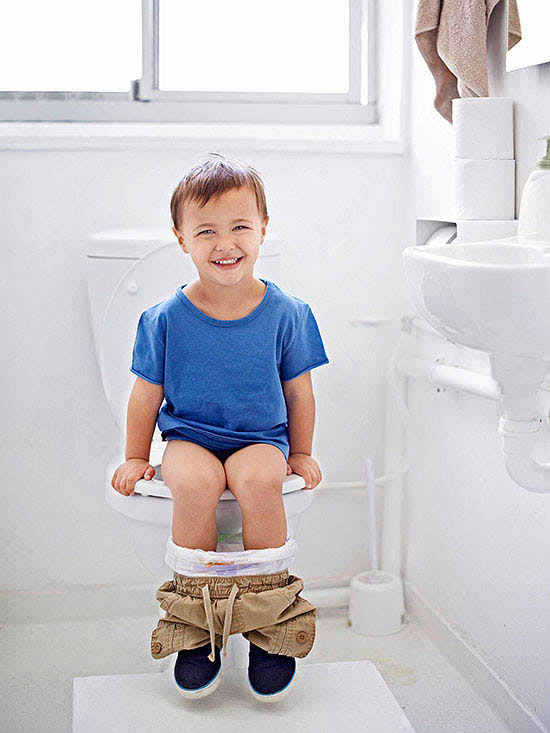 The Journal of Urology, 176(1), 314–324. https://www.auajournals.org/doi/10.1016/S0022-5347%2806%2
The Journal of Urology, 176(1), 314–324. https://www.auajournals.org/doi/10.1016/S0022-5347%2806%25-3
#healthyson #research #sleepincot #sleepynight
', nextArrow: '', responsive: [{breakpoint: 1199, settings: {arrows: !1, infinite: !1, slidesToShow: 1}}] }) })How to teach a child to get up at night on the potty
The question that worries most parents is how and at what age should a child be potty trained? How to do it right and are there any subtleties that can affect the success of training?
Before starting to answer these questions, it is important to find the reasons why a child can urinate at night:
- Age. Until the age of 2, it is still difficult for a child to control his physiological processes.
- Stress. The child could get some kind of negative experience, be afraid of something. The reason for such stress can be not only “scary” stories, but also any emotionally charged situations, including visiting the mall before bed, any changes in the family, watching a cartoon before bed.

- Inability to fall asleep independently. The lack of independence skills in general is the reason that the baby cannot cope without outside help, both falling asleep and waking up.
- Large amount of liquid drunk. If a child drinks a large amount of liquid (water, milk, yogurt, etc.) before bedtime or at night, the likelihood that he will urinate increases. Therefore, it is recommended not to drink a lot of water at night. We recommend leaving a drinking cup next to the baby's crib so that he knows that if necessary, he can always drink water on his own.
What is important to check before starting training?
- Is the child over 2 years old?
- Is the child healthy?
- Can a child do something on his own without the help of his mother? For example, eat with a spoon, communicate your needs, needs?
- Will the child then be able to fall asleep on his own at night, waking up to go to the toilet?
If at least one of these questions is answered in the negative, it means that at the moment the baby is not quite ready to handle the potty on his own at night.
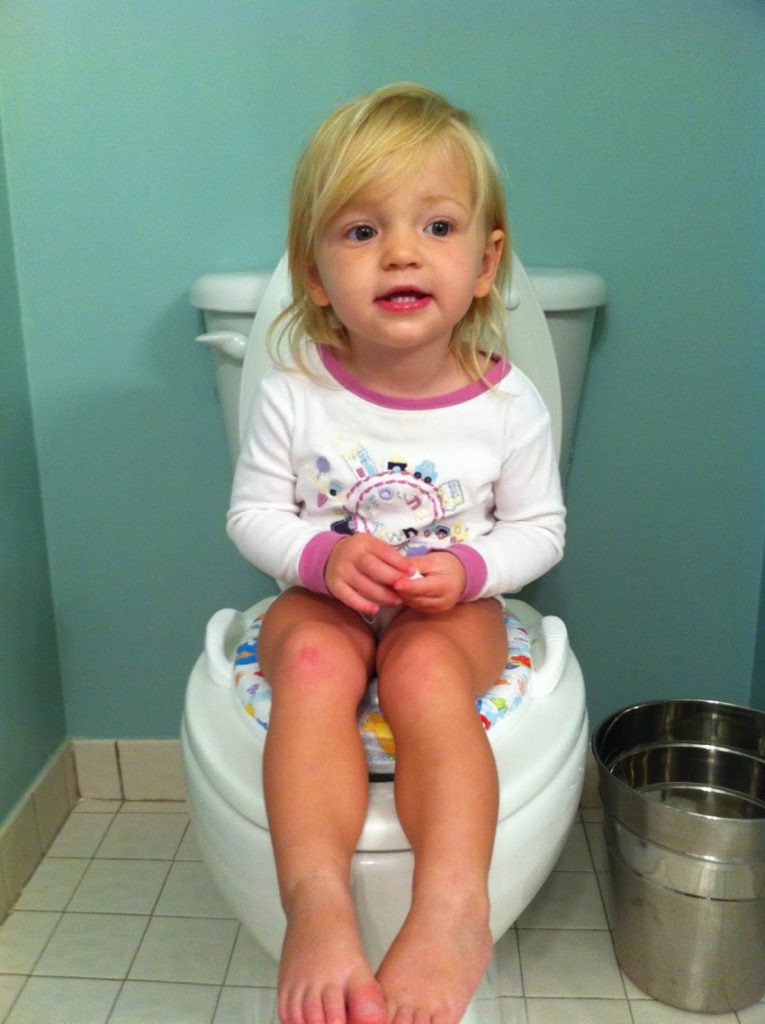
Some diseases, such as cystitis or diabetes mellitus, directly affect the process of urination, often making it difficult.
What can parents do to make potty training easy?
- Remember about age restrictions. If the baby is more than 2 years old, but at the same time he is already quite independent and already knows a lot and can do something without the help of his parents, then you can start potty training. But it is also important to remember that a high degree of self-organization should not be expected from a baby much younger than 2 years old due to physical development and insufficient maturity of the nervous system.
- If the baby is not healthy, he needs help from parents . It is important for parents to understand that potty training is not only an educational psychological process, but also a process that largely depends on physiology. In the case of some diseases, you should be patient and not insist on a quick result.
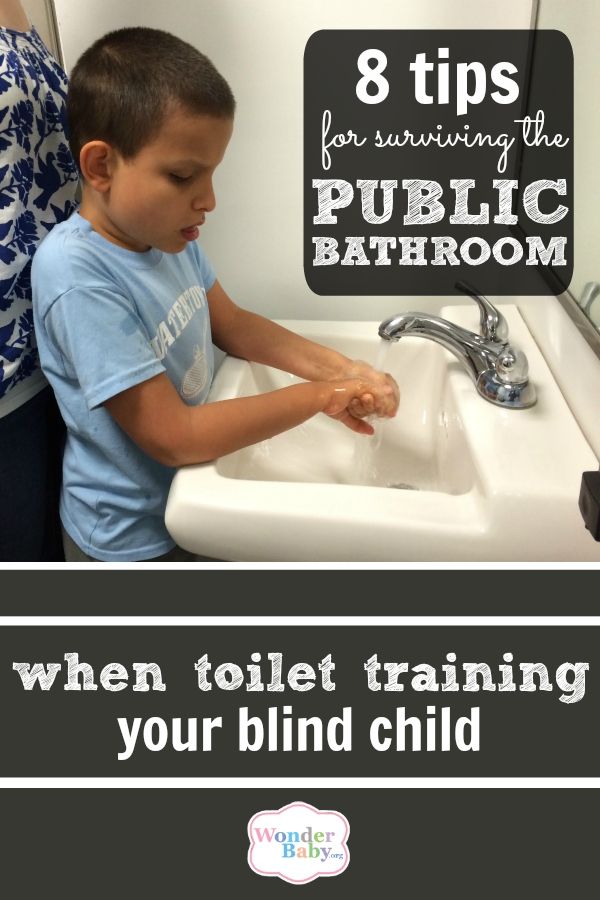
- Help your child to develop his independence. After the baby reaches the age of 1 year, the encouragement by parents of independent actions of the child is one of the main forms of stimulation of his development and strengthening of attachment. The development of the baby largely depends on the environment in which he grows up: how safe the environment is, how many opportunities for trial and error there are, how much parents are ready to support the baby in his endeavors (first steps, falls, first words and desires).
The child should have his personal area of responsibility, that small area where he does something himself (he collects the pyramid, he walks, he eats with a spoon). Despite the fact that the mother is nearby, encouraging and supporting him, but not interfering unnecessarily.
- The last but very important point is baby's ability to fall asleep on its own. The acquired skill of self-falling asleep will help the baby in learning to wake up on the potty.
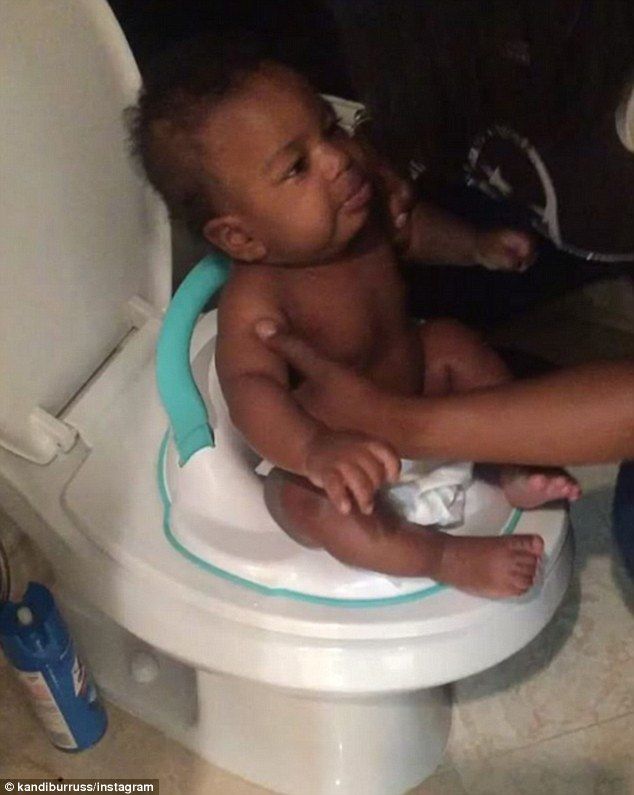 Knowing how to fall asleep on his own, it will be easier for him to wake up on his own, feeling his needs.
Knowing how to fall asleep on his own, it will be easier for him to wake up on his own, feeling his needs.
Ways to teach your baby to get up at night to go to the toilet or use the potty
- Learn to sleep without a diaper. The first thing to do is not to put a diaper on your baby. Waking up wet, he will call his parents. After a few of these nights, the child may understand the cause and effect relationship and wake up early before pees. As a precautionary measure, it is recommended to use disposable absorbent diapers. This option may not be suitable for all children, as some do not wake up, even having peed. Here, each mother herself must evaluate whether this method is suitable for her child.
- Clockwork. The child can be encouraged to get up to use the toilet or potty at a certain time in the middle of the night and explain to him that it is time to pee. It is very important that the baby is not completely sleepy, but aware of what is happening.
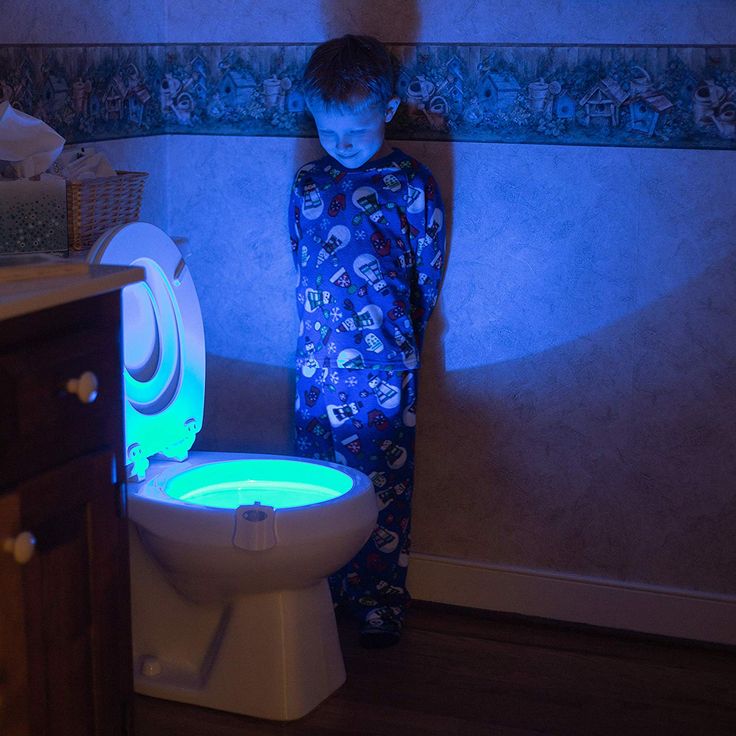 So gradually he will form the habit of waking up at night to go to the toilet.
So gradually he will form the habit of waking up at night to go to the toilet. - Incentives. At the age of 2 years, external motivation and encouragement work well with children. You can create a poster of achievements, where you can record all the successes of the child, both with sleep and with awakenings to pee. For example, give him stickers for "dry nights", and when there are a certain number of stickers, give him a small gift.
- Game during the day, imitation. While the baby is awake, you can play the situation with the potty, pronouncing them. The experience of learning awakenings should be internalized in the psyche of the baby - become his personal experience. This may take some time, where the help and explanations of parents will create a basis for understanding the situation by the baby, and playing will strengthen this experience.
The most important thing in any education is the attitude of the parents.
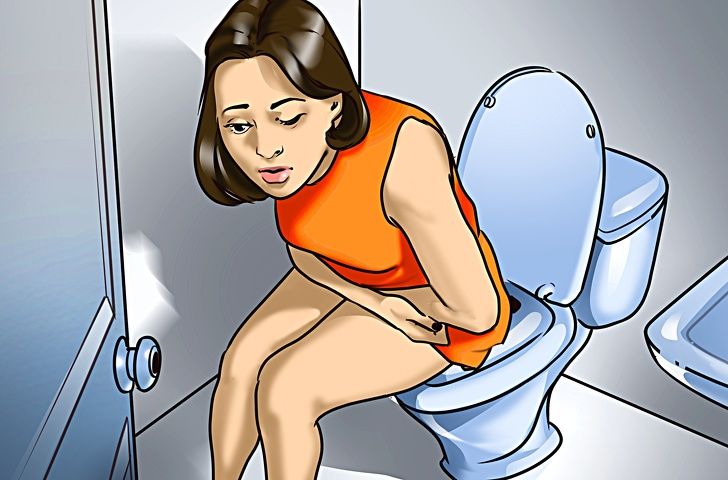
- The lower level is synchronization of sphincter relaxation and detrusor contraction.
